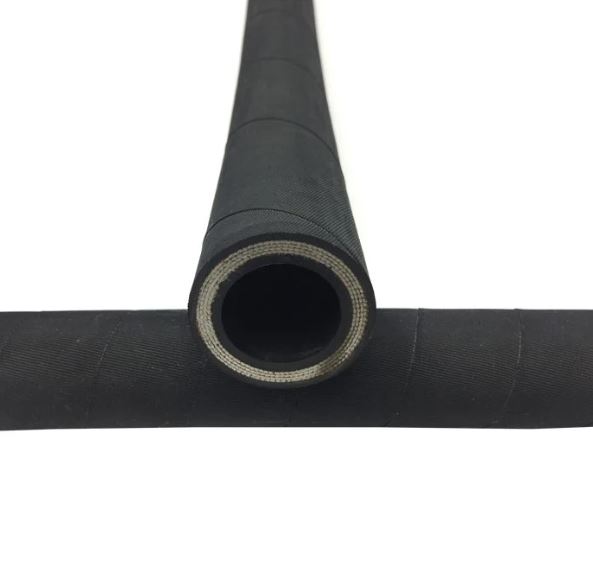8mm Vacuum Hose for Optimal Performance and Versatile Applications in Various Industries
Understanding 8mm Vacuum Hose A Comprehensive Guide
When it comes to fluid transfer in various industries, selecting the right equipment is crucial for maintaining efficiency and effectiveness. One such component that often plays a pivotal role in these processes is the vacuum hose. Specifically, the 8mm vacuum hose has gained popularity across multiple applications due to its versatility and reliability. This article explores the features, applications, materials, and installation tips for 8mm vacuum hoses, ensuring you understand their significance.
What is an 8mm Vacuum Hose?
An 8mm vacuum hose is a flexible tube designed to transport air, liquids, or gases under vacuum conditions. The “8mm” designation refers to the internal diameter of the hose, which is approximately 0.31 inches. This size makes it suitable for a range of applications, including automotive, industrial, and commercial sectors. The hose’s primary function is to create a vacuum, allowing efficient suction and fluid transfer.
Applications of 8mm Vacuum Hoses
1. Automotive Industry In the automotive sector, 8mm vacuum hoses are commonly used for various applications, such as connecting vacuum actuators, emission control systems, and brake boosters. Their ability to handle significant pressure changes makes them ideal for maintaining optimal vehicle performance.
2. Industrial Machinery Many industrial machines rely on 8mm vacuum hoses for tasks such as material handling, suction lifting, and waste removal. These hoses can effectively transport dust, debris, and other materials, ensuring a clean and efficient work environment.
3. Food and Beverage In the food industry, hygiene is paramount. 8mm vacuum hoses made from food-safe materials are utilized in piping systems for vacuum packaging, filtration, and ingredient transfer. Their compatibility with various food substances ensures both safety and efficiency in processing.
4. Laboratories Scientific laboratories often require 8mm vacuum hoses for applications such as filtration and fluid transfer. The ability to withstand corrosive substances and maintain integrity under varying temperatures is essential in these environments.
Material and Durability
The material of an 8mm vacuum hose significantly influences its performance and durability. Common materials include
- PVC (Polyvinyl Chloride) Often used due to its affordability and flexibility. PVC hoses can handle low-pressure vacuum applications.
- Rubber Known for its resilience, rubber hoses are ideal for more demanding conditions, where flexibility and resistance to abrasion are required.
8mm vacuum hose

- Silicone This is often the material of choice for high-temperature applications, as it can withstand extreme heat without compromising structural integrity.
- Polyurethane This material offers excellent flexibility and is resistant to abrasions and punctures, making it suitable for both industrial and automotive uses.
When selecting a hose, consider factors such as temperature resistance, chemical compatibility, and the hose's lifespan under your specific application conditions.
Installation Tips
Proper installation of an 8mm vacuum hose is crucial for optimal performance. Here are some tips to ensure successful installation
1. Cutting the Hose Use a sharp knife or hose cutter to ensure a clean cut. A ragged edge can impede flow and create leaks.
2. Fitting Connections Ensure that the fittings are compatible with the hose diameter. Tighten them appropriately to prevent vacuum leaks.
3. Avoiding Kinks While installing the hose, avoid sharp bends or kinks, as these can restrict airflow and reduce efficiency.
4. Regular Maintenance Inspect the hoses regularly for wear and tear, especially in dynamic applications where movement occurs. Replace any damaged hoses promptly to avoid system failures.
5. Temperature and Chemical Considerations Make sure the hose material is suitable for the chemical or temperature conditions it will encounter.
Conclusion
In conclusion, the 8mm vacuum hose is a vital component across various industries. Its versatility makes it suitable for numerous applications, from automotive systems to food processing. Understanding the right materials, applications, and installation techniques will ensure you maximize the utility and longevity of your vacuum hose. Proper use and maintenance are key to keeping your systems efficient and effective, paving the way for seamless operations in your endeavors.
-
Welded Wire Mesh Panel: Durable, Versatile, and AffordableNewsJul.28,2025
-
Top Quality Oxy Acetylene Hoses for Sale Fit for Welding DemandsNewsJul.28,2025
-
The Future of Pneumatic Air Tubes in IndustryNewsJul.28,2025
-
Superior and Reliable LPG Hose Pipe Solutions for Every NeedNewsJul.28,2025
-
Exceptionally Durable and Versatile Premium Braided PVC TubingNewsJul.28,2025
-
Best Adapters for Connecting Garden Hose to PVC Pipe ConnectionsNewsJul.28,2025














